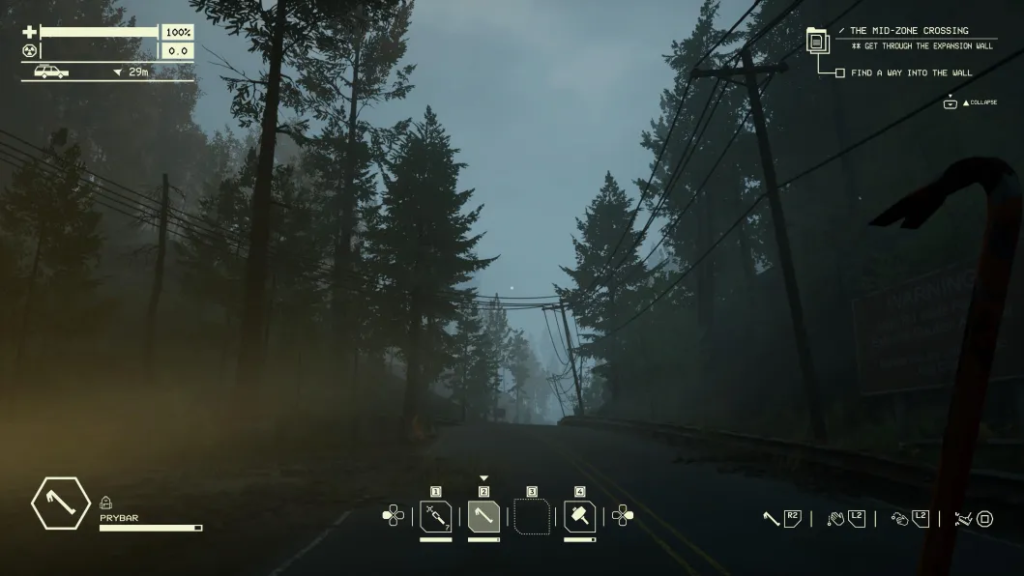
Initial release date: 2024
Platforms: PlayStation 5, GeForce Now, Microsoft Windows
Developer: Ironwood Studios
Mode: Single-player video game
License: proprietary license
Composer: Wilbert Roget, II
Genres: Adventure game, Indie game, Simulation video game, Racing, Adventure
Every few years, it appears that an indie developer steps in and tries to shake things up in a genre. This time, Ironwood Studios is releasing Pacific Drive. Pacific Drive is a first-person survival-horror game featuring your character and an automobile you discover early in the game. Your role as the driver is to assist the people on the radio with jobs while avoiding death traps across the Exclusion Zone.
Pacific Drive takes place in 1998 and tells the “untold story” of what happened in the Olympic Exclusion Zone of the Pacific Northwest. If this reminds you of Twin Peaks or something similar, you’re on the correct track. As you begin your trip, your character makes their way into a zone that hasn’t seen a new face in quite some time. When you teleport in and find the station wagon, you’ll hear the voices of several characters, including a scientist who may or may not be involved in the reason for the lockdown.
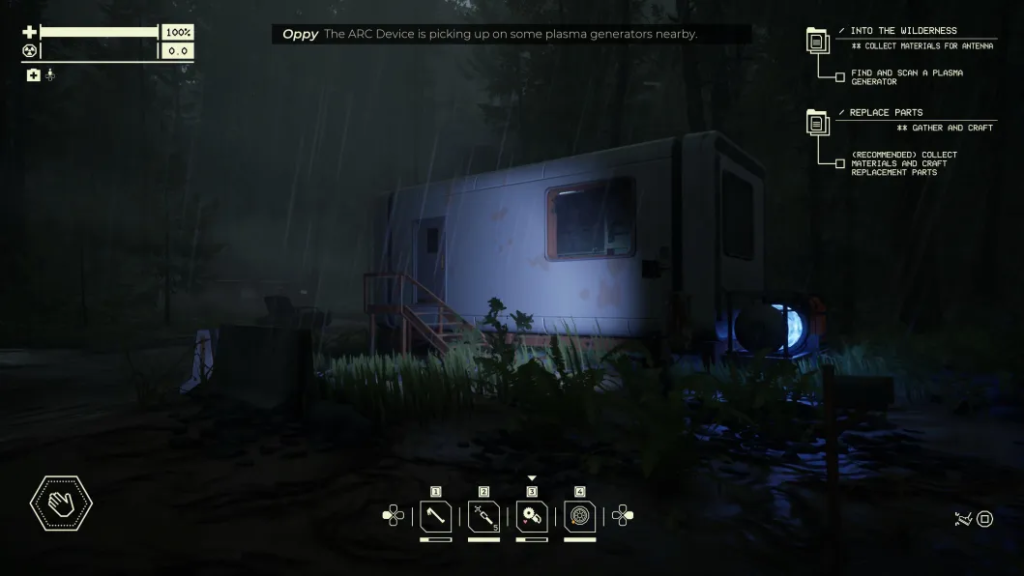
The lore is really intriguing from the top down. I was ready to learn what caused the anomalies, what produced this zone, who these folks on the radio were, and whether I could trust them from the moment I stepped into the Station Wagon. However, the conversations with the characters you’ll hear on the radio differ greatly from how they present some of the “historical information.” Along your path, you’ll come across emails, text messages, and so on from people who were either in the zone when it melted down or had something to do with the meltdown itself.
My main issue with this is that you’ll have to park your car and pray no “enemies” appear while you’re reading or immediately after you finish. I liked how they did this by using black box radios that you could pick up during runs (they appear green on your map). These boxes contain completely voiced moments that can be listened to while fleeing an opponent or escaping anomalies and storms. Learning each piece of information piqued my interest even more; nevertheless, I began to ignore some of the emails/texts, particularly during stressful times, leaving me feeling as if I had missed out on some important legend.
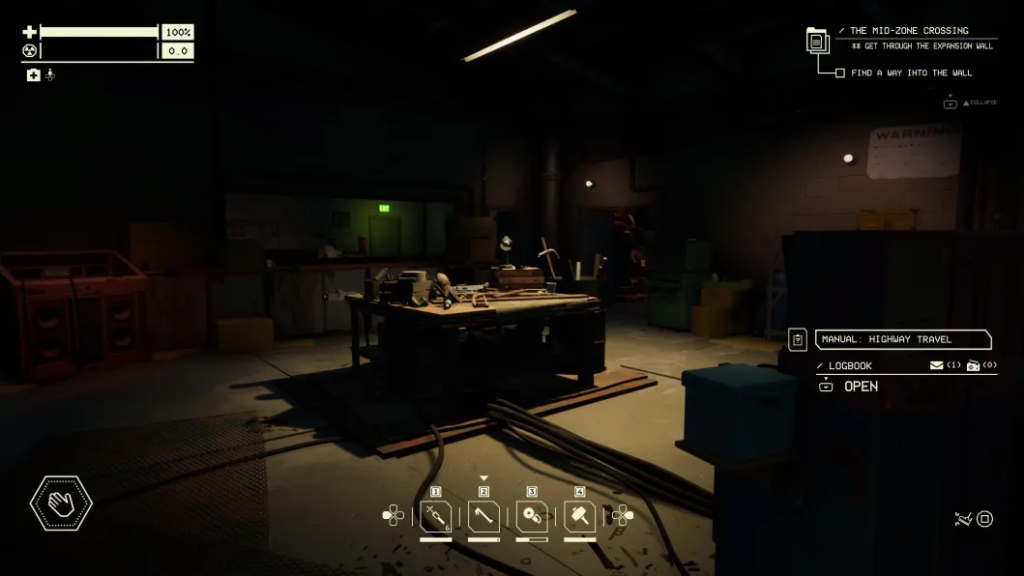
While the environment is fascinating, the gameplay was really challenging for me. I spent the first nine hours completing only the first five or six tasks. Dying frequently from falling off the road (even without an anomaly to screw with the automobile), the car sustaining damage from anything and everything, and becoming lost in the electrical storm; one after another. Personally, I felt like I understood everything from making to decorating to navigating; nevertheless, for some reason, I had so much problem finishing runs designed solely to collect scrap and rubber. That’s when I pulled out the big guns and asked Ron Burke, Editor-In-Chief of Gaming Trend and Survival Horror Savant, to look into it and see if I was the problem or if the game was truly that difficult.
Ron: TLDR? It is. Or at least it begins that way. Pacific Drive is very much a survival game, but not in the way you might expect. There is minimal explanation, and it is up to you to explore your surroundings. The mechanics of your car (really the key protagonist of this adventure) are purposefully complicated. Your automobile will develop idiosyncrasies, and you will need to do some homework and research before you can figure out why your side door flies open when you blow the horn. When these elements click, the game starts to fall into place, but then it doesn’t. Trial and error is constant, as is the necessity to periodically re-evaluate the same mechanics from a different perspective. Things you thought you understood take on new meanings. I can’t say much more without spoiling some of the shocks, but they are as satisfying as they are perplexing. Return to Adam!
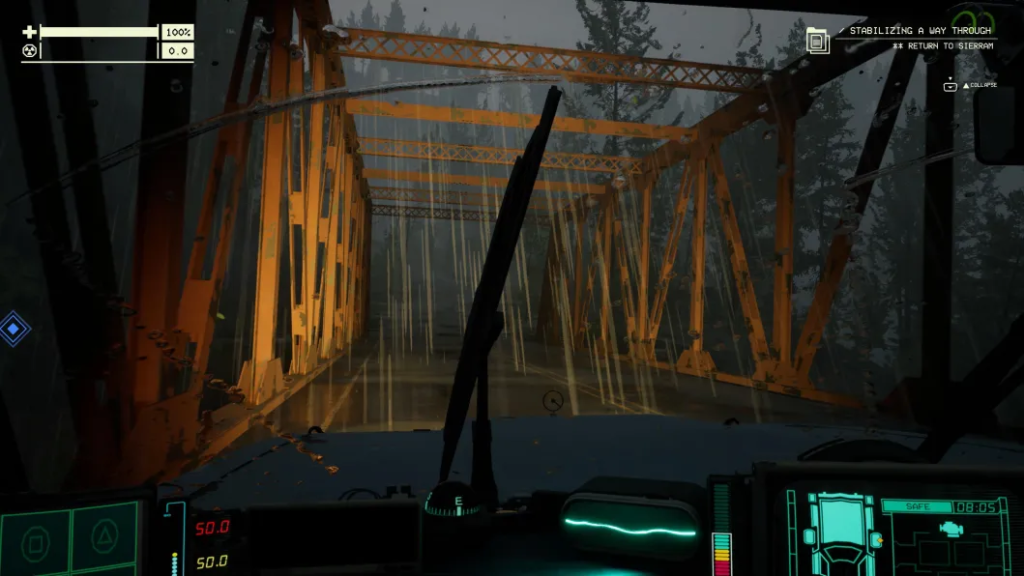
Inside the zone, you’ll encounter a variety of foes, including flying robots with tow lines and small green balls of negative energy that reminded me of Buzz Droids from Star Wars. Everyone likes to generate mayhem. It never felt like they were doing anything on purpose or driving you in a certain direction; they just wanted your car off the road and facing a tree, rock, or other potentially damaging item of environment. As you and your Station Wagon progress, you’ll discover ways to avoid these minor annoyances, but early on, they’ll undoubtedly be the reason you restart.
The “storm” I mentioned before works in this case in the same manner that it does in Fortnite, Apex Legends, and other games, although it usually appears when you start your car and teleport home. In the storm, you’ll take a lot of damage and lose control of your car, just like with an anomaly. However, staying in the storm for too long could get you into danger. I lost several times simply because I could not reach the teleportation beam in time.
Whenever I was frustrated, I would start scratching stuff out on the road. You receive a variety of equipment, but my favorite is the buzzsaw, which allows you to trash cars found along the journey as well as earlier sections replaced on the Station Wagon. During this time, you can find almost anything you need to unlock blueprints and create the products you require.
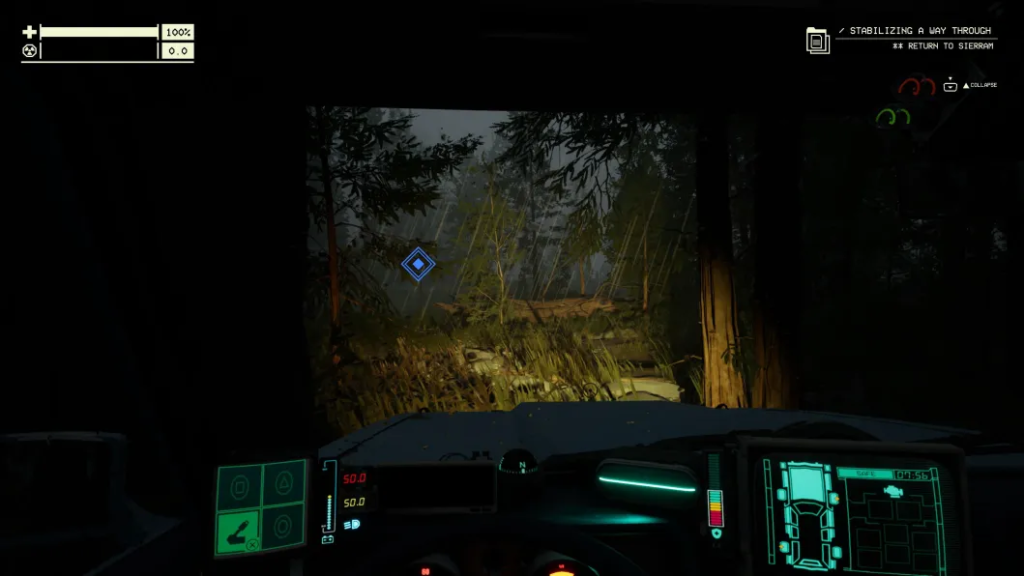
As you can see, there were a number of factors that prevented me from fully immersing myself in Pacific Drive’s lore. My tolerance was getting thin after hearing the same dialogue situations over and over again by the fourth or fifth attempt.
There was still much to enjoy about the game as a whole. The first item to note is the Station Wagon’s extensive crafting and repair systems. While some of the menus can be incredibly daunting, once you understand them, they become lot easier to navigate and locate what you’re looking for. Inside the repair shop, which serves as a home base, you’ll be able to learn new crafting techniques, paint your automobile and add decals, repair anything you need, and replace anything you can’t fix. Consider any unique features your car may have.
What are the quirks you’re inquiring about? They are minor tasks that the car will begin to perform when it is driven more frequently. It reminded me of how many times characters in Star Wars mentioned R2-D2’s unique personality throughout the Skywalker Saga. It gives the Station Wagon the impression that it is alive and just as essential as your character. You can use the computer adjacent to the parking lot to diagnose the problem and, if necessary, fix it!
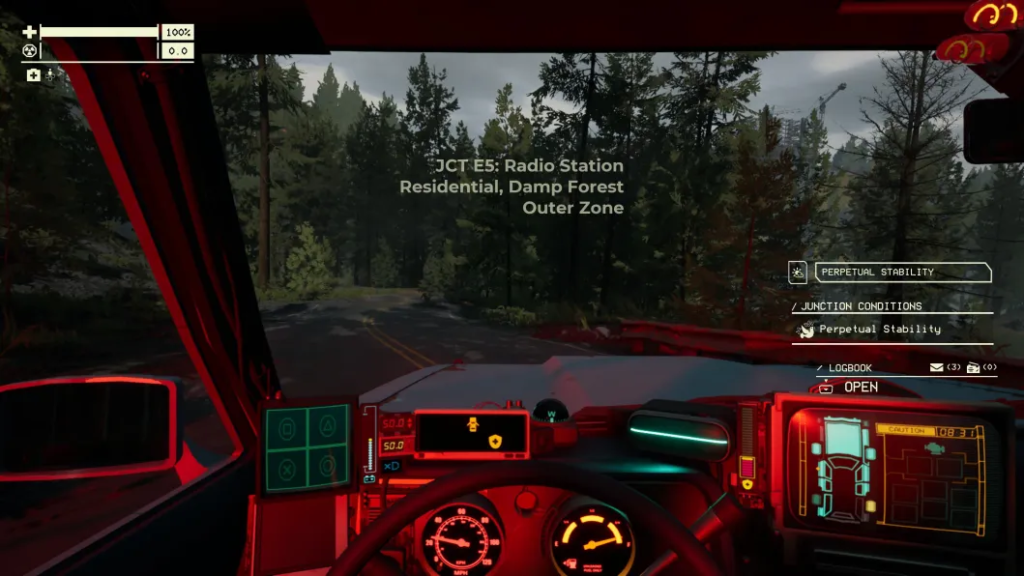
Speaking of the Station Wagon, one of its “charm” or, in my case, “frustration” is how readily the tires are ruined by nearly anything. You must consider air pressure and tire deterioration, and if even one tire is underinflated, the entire vehicle will drift dramatically. I always kept a large supply of supplies on hand in case I needed to make new tires, because it’s sometimes quicker to replace a tire than to try to add air and repair it.
You can also turn everything off or limit your exposure to the outside world. You can utilize the menu to disable automobile and character damage, set quirk limits, and so on. Some of these, such as the damage being off, will limit the number of awards you can get. However, I was unable to proceed through the game unless I disabled damage so that I could endure the storm and not fly away every thirty seconds or so. While turning everything off made the gameplay a little easier, it also seemed like cheating and removed the “horror” aspect of the “survival-horror.”
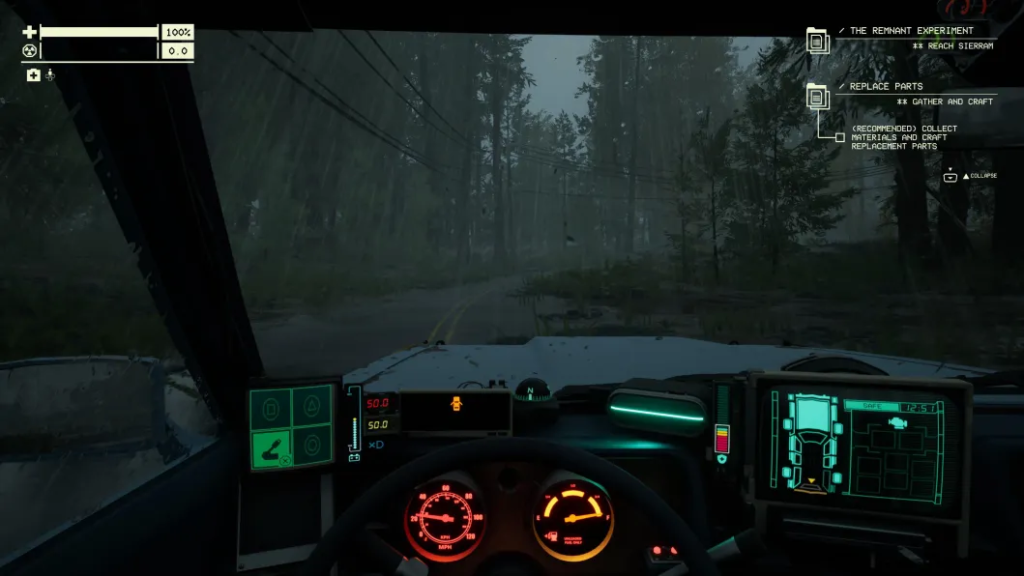
Graphically, this game looks fantastic! The weather conditions appeared to be comparable to some of the top titles released on the PS5 last year. I enjoyed the attention to detail and how different it is to see through the front windshield when it is pouring, foggy, a storm is approaching, and so on. The only graphic element that I found disturbing was the grass effects. However, the only time you’ll ever contact with grass that close is outside of the car, and in my time playing, I don’t think I spent more than an hour out of the car, with the most of that spent crafting in the shop or stealing houses/cars on the route to objectives.
At its foundation, Pacific Drive has some interesting game ideas and lore, but the early game gameplay is exceedingly difficult, making it impossible to recommend for anyone who is new to or very early in their Survival Horror journey. I’d recommend it to someone like Ron who have a lot of experience in the genre and can focus solely on the gameplay and understanding movement rather than trying to figure everything out at once. It can be overwhelming, and in the survival-horror genre, putting the terror on hold due to frustration with survival is not a pleasurable experience.
Review Overview
Gameplay – 82%
Controls – 80%
Aesthetics – 85%
Content – 78%
Accessibility – 83%
Value – 80%
Overall Rating – 81%
VERY GOOD!
Summary: Pacific Drive takes a bold approach to the survival genre, offering a unique blend of driving and exploration that sets it apart from other games in the field. The gameplay is engaging, with a tense atmosphere that keeps you on edge as you navigate through a dynamic and hazardous world. The visuals and design contribute to the overall immersion, though there’s room for improvement in content variety and accessibility. Despite some minor flaws, Pacific Drive is a refreshing and original experience that offers a new perspective on what a survival game can be. It’s a must-try for fans of the genre looking for something different.

